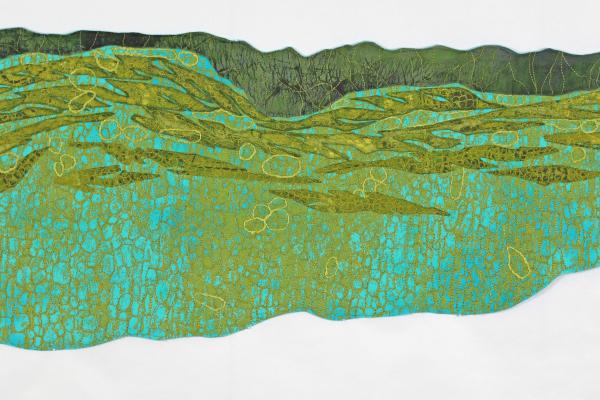Insights from the Fifth National Climate Assessment's Midwest Chapter Webinar

Last week, the U.S. Global Change Research Program (USGCRP) convened a distinguished panel of experts to discuss the Midwest Chapter of the Fifth National Climate Assessment (NCA5). Aaron Wilson, the lead author of the Chapter and a principal investigator at the Byrd Center, spearheaded the discussion, focusing on the Midwest's climatic challenges, including the complex impacts of climate change on the region's environment, agriculture, infrastructure, and communities.
Initiated under the Global Change Research Act of 1990 and facilitated by USGCRP, the National Climate Assessment aims to provide an in-depth understanding of climate change impacts across the U.S.
Wilson highlighted various critical areas during the webinar, including climate change's economic, social, and justice implications and the Midwest's vulnerability to severe hydrologic events like droughts and floods, revealing a region at a pivotal juncture, navigating oscillating climatic shifts, focusing on the need for sustainable management practices and the potential for innovative adaptive strategies.
Discussion included a notable rise in annual average temperatures across the Midwest, particularly in the northern areas surrounding the Great Lakes, evidencing an increase of 0.5 to 2oF since the early 20th century. This warming trend, paired with shifts in precipitation patterns, signals an escalation in the region's vulnerability to extreme weather events. The "warming hole" phenomenon, areas with stable or declining summer temperatures, adds complexity to climate projections.
Agriculture, a cornerstone of the Midwest's economy, faces threats from fluctuating moisture levels, soil erosion, and changing pest dynamics, with a significant vulnerability within the $7.1 billion specialty crop industry. As for adaptation and mitigation, climate-Smart agricultural strategies could balance agricultural needs and environmental impacts compared to conventional agriculture.
The region's aquatic and terrestrial ecosystems are also stressed by increased flooding and drought, impacting biodiversity and cultural practices. Conservation and management strategies are recommended.
Other findings included the exacerbating effects of climate change, rising temperatures, decreased lake ice, and wildfire smoke on community health and disparities compounded by systemic inequalities. The aging infrastructure, particularly the nearly 92,000 dams classified as high hazard potential, demands urgent attention and upgrades to withstand the adverse effects of climate change. Wilson also emphasized the importance of water quality and quantity management to maintain sustainable food production, ecosystem health, and recreational activities amidst increased risks of droughts, floods, and harmful algal blooms.
The panel provided a critical resource for understanding the Midwest's climatic challenges and impacts. They offered a roadmap for policymakers, stakeholders, and communities to navigate toward sustainable adaptation and mitigation strategies to protect human and ecological well-being.
Learn more about the NCA5's Midwest Chapter and watch the recording of this and other webinars offered by USGCRP.
Content courtesy of the State Climate Office of Ohio.
Image credit: Pat Darif, Coastal Bloom II (2020, Fiber). Learn more about the image.
